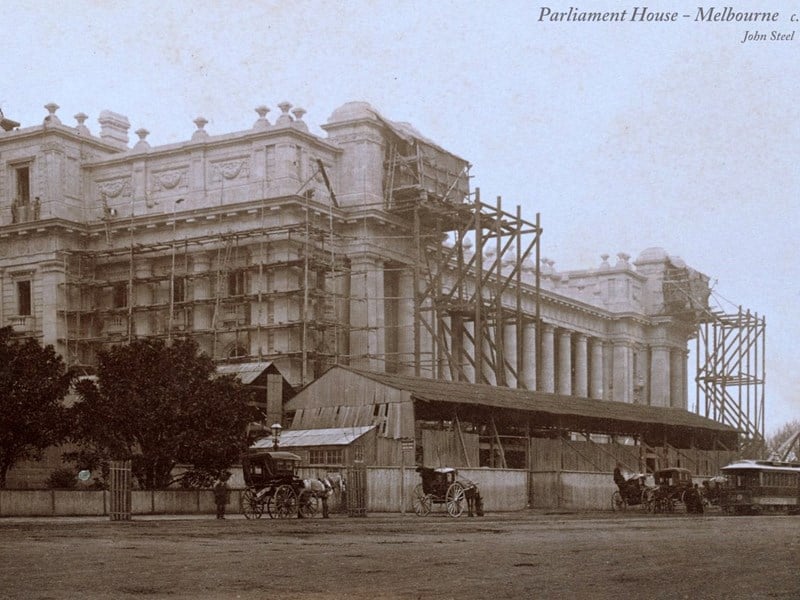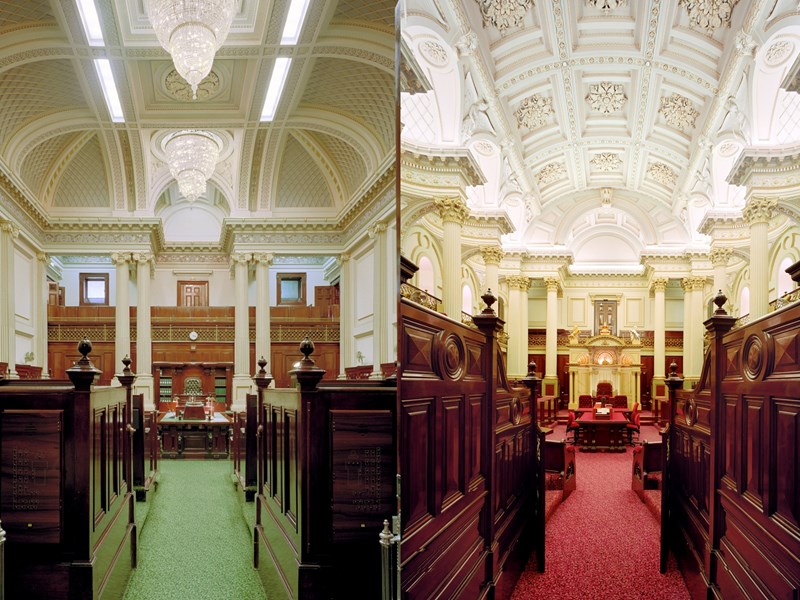The Legislative Council 1851-1856
From 1851 to 1856, Victoria had only one legislative body, the Legislative Council, which held its proceedings at St Patrick's Hall in Bourke Street Melbourne.

“...there shall be within and for the Colony of Victoria a separate Legislative Council...”
An Act for the better Government of Her Majesty’s Australian Colonies 1850
On this page
Formation of the Council
From 1836 to 1851 New South Wales governed the area now known as Victoria. At the time it was called the Port Phillip District.
In 1850 the United Kingdom Parliament passed An Act for the better Government of Her Majesty's Australian Colonies. It allowed Victoria to separate from New South Wales. Under the new law, Victoria separated on 1 July 1851.
The new colony was to be overseen by a Governor, advised by an Executive Council of 4 persons and by a unicameral (one chamber) Legislative Council.
Composition of the Council
Voting was restricted to males of over 21 years who owned a substantial amount of property.
1851 Legislative Council30 members- 20 elected (16 electorates), 10 appointed.
The composition of the new Legislative Council was determined by an Act of the Legislative Council of New South Wales.
20 members were elected, from 16 electorates. Melbourne district had three members, Geelong and North Bourke had two members each, and all other districts had one member.
A further 10 members were appointed by the Governor. They did not represent electorates.
54 members- 36 elected (16 electorates), 18 appointed.
In 1853, the Victorian Legislative Council passed an Act to increase the number of members. No new electorates were added, but the existing electorates were allocated 16 additional members.
Melbourne had six members, Geelong and North Bourke had three members each, Gipps’ Land and Wimmera had one member each, and all other districts had two members.
A further 18 members were appointed by the Governor. They did not represent electorates.
66 members- 44 elected (21 electorates), 22 appointed.
In 1855, the Victorian Legislative Council passed an Act to add five new electorates.
Melbourne district had six members, Geelong and North Bourke had three members, and all other districts had one or two members.
A further 22 members were appointed by the Governor. They did not represent electorates.
Some notable members of the Legislative Council include:
- Redmond Barry, later inaugural chancellor of the University of Melbourne
- John Fawkner, one of the founders of Melbourne
- Augustus Greeves, former mayor of Melbourne
- William Haines, later the first Premier of Victoria
- William Lonsdale, who supervised the founding of Melbourne
- William Mitchell, later President of the Legislative Council
- Francis Murphy, later first Speaker of the Legislative Assembly
- William Nicholson, later Premier of Victoria, responsible for introducing the secret ballot to Victoria
- John O’Shanassy, later Premier of Victoria
- James Palmer, later first President of the Legislative Council
- Edward Stone Parker, former assistant 'Protector of Aborigines'
- John Smith, later mayor of Melbourne
- William Stawell, later Chief Justice of the Supreme Court of Victoria
- Alexander Thomson, first mayor of Geelong
Legacy
The Legislative Council made long-lasting contributions to Victorian parliamentary democracy by:
- drafting a Victorian Constitution
- approving the secret ballot for elections
- starting to build Parliament House.
Victoria's Constitution, passed by the Council, set up a bicameral (two chamber) Parliament, with a Legislative Council and a Legislative Assembly. Elections for the Parliament, using the secret ballot, were held in spring 1856.
On 21 November 1856 Victoria's first members of Parliament met in their recently completed chambers (part of the present Parliament House) to be sworn in. On 25 November Major-General Macarthur, the Acting Governor, officially opened the Parliament.


